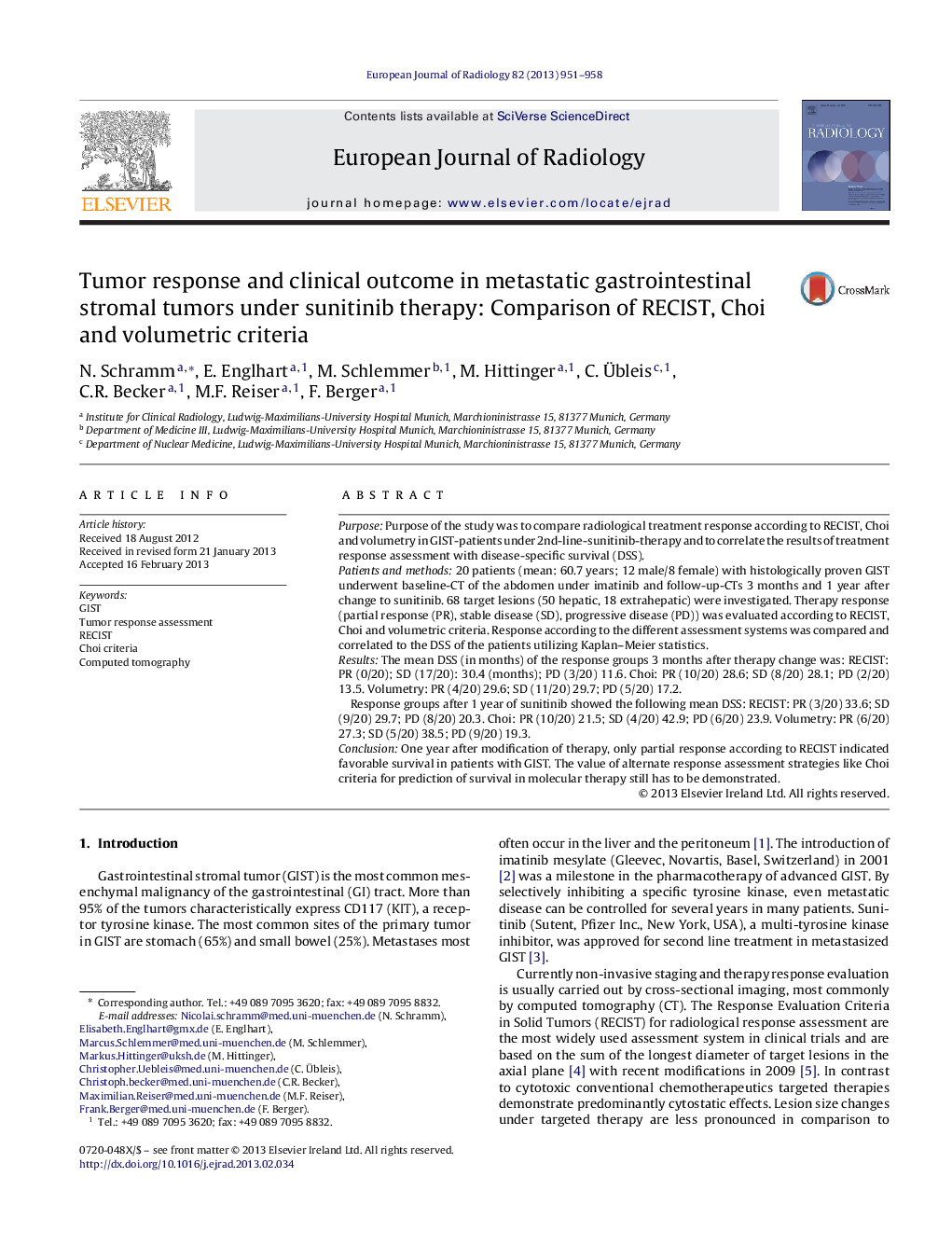| Article ID | Journal | Published Year | Pages | File Type |
|---|---|---|---|---|
| 4225483 | European Journal of Radiology | 2013 | 8 Pages |
PurposePurpose of the study was to compare radiological treatment response according to RECIST, Choi and volumetry in GIST-patients under 2nd-line-sunitinib-therapy and to correlate the results of treatment response assessment with disease-specific survival (DSS).Patients and methods20 patients (mean: 60.7 years; 12 male/8 female) with histologically proven GIST underwent baseline-CT of the abdomen under imatinib and follow-up-CTs 3 months and 1 year after change to sunitinib. 68 target lesions (50 hepatic, 18 extrahepatic) were investigated. Therapy response (partial response (PR), stable disease (SD), progressive disease (PD)) was evaluated according to RECIST, Choi and volumetric criteria. Response according to the different assessment systems was compared and correlated to the DSS of the patients utilizing Kaplan–Meier statistics.ResultsThe mean DSS (in months) of the response groups 3 months after therapy change was: RECIST: PR (0/20); SD (17/20): 30.4 (months); PD (3/20) 11.6. Choi: PR (10/20) 28.6; SD (8/20) 28.1; PD (2/20) 13.5. Volumetry: PR (4/20) 29.6; SD (11/20) 29.7; PD (5/20) 17.2.Response groups after 1 year of sunitinib showed the following mean DSS: RECIST: PR (3/20) 33.6; SD (9/20) 29.7; PD (8/20) 20.3. Choi: PR (10/20) 21.5; SD (4/20) 42.9; PD (6/20) 23.9. Volumetry: PR (6/20) 27.3; SD (5/20) 38.5; PD (9/20) 19.3.ConclusionOne year after modification of therapy, only partial response according to RECIST indicated favorable survival in patients with GIST. The value of alternate response assessment strategies like Choi criteria for prediction of survival in molecular therapy still has to be demonstrated.
